

4 Paleo Plant Fats to Try. Most of the time, Paleo recipes tend to prioritize animal fats – lard, tallow, butter, or other carnivorous alternatives – over vegetable fat choices.
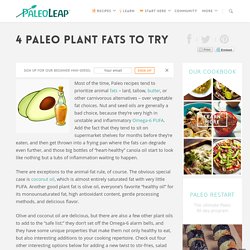
Nut and seed oils are generally a bad choice, because they’re very high in unstable and inflammatory Omega-6 PUFA. Add the fact that they tend to sit on supermarket shelves for months before they’re eaten, and then get thrown into a frying pan where the fats can degrade even further, and those big bottles of “heart-healthy” canola oil start to look like nothing but a tubs of inflammation waiting to happen. There are exceptions to the animal-fat rule, of course. The obvious special case is coconut oil, which is almost entirely saturated fat with very little PUFA.
Another good plant fat is olive oil, everyone’s favorite “healthy oil” for its monounsaturated fat, high antioxidant content, gentle processing methods, and delicious flavor. Macadamia Oil Red Palm Oil The big downside to palm oil is the environmental cost of producing it. Cooking With Cast Iron. Cast-iron skillets are classic food-photography props – they’re fashionably rustic and have nice, simple lines that go well with all different kinds of foods.
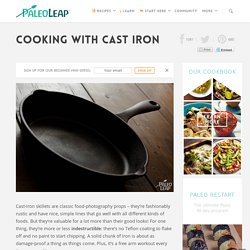
Easy Pressure Cooker Stock. We’ve already discussed the simple process of preparing a healthy and delicious bone broth or stock at home with leftover bones from roasts, bone-in parts, and even whole poultry carcasses.
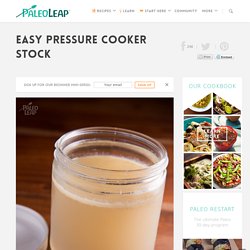
Here though, we decided to try out a version in the pressure cooker because, even if the slow cooker or stovetop version is quite easy, it takes quite a bit of time until it’s ready. A Guide To Salts. We’ve discussed salt and sodium intake already on a few occasions and we covered topics like salt cravings and also took a skeptical take on sea salt compared to more common table salt.

Growing Your Own Herb Garden. One of the most rewarding things anyone who enjoys cooking can do for themselves is grow a herb garden.

There is nothing better than adding fresh herbs to your recipes, both for the taste and for the health benefits. I find that having herbs on hand has also encouraged me to be more experimental with what I am cooking. Rendering Fat. Coconut oil, olive oil and butter or clarified butter are delicious fats that are also healthy for you, but the real original Paleo fats are animal fats.

The Art Of Cooking Steak. The art of cooking the perfect steak can be intimidating for many, but it doesn’t have to be, because with only a few basic techniques you’re guaranteed to experience great success every time.
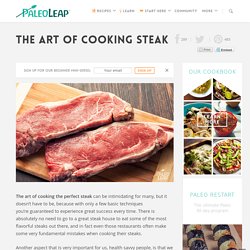
There is absolutely no need to go to a great steak house to eat some of the most flavorful steaks out there, and in fact even those restaurants often make some very fundamental mistakes when cooking their steaks. Another aspect that is very important for us, health savvy people, is that we obtain an end product that is not only tasty, but also health promoting.
Therefore, opting for grass-fed beef over grain-fed and choosing the right fat to cook the steak with will not only reward you with a much tastier steak, but also with something that you’ll know to be good for your health. Choosing the steak. Making Clarified Butter (Ghee) Clarified butter, also called Ghee in Indian cuisine, is simply butter with the milk proteins, sugars and water removed.
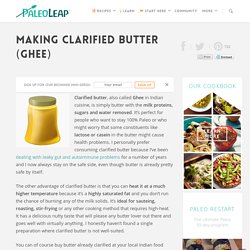
It’s perfect for people who want to stay 100% Paleo or who might worry that some constituents like lactose or casein in the butter might cause health problems. Making fresh bone stock. Homemade bone stock or broth should become a staple for anyone who’s starting a journey into Paleo and lifestyle.

If you’ve never had it, you’ll discover that you can use it regularly for soups, sauces, stews, curries and just about any dish that requires cooking a piece of meat or vegetable in a liquid. Bone stock or broth might be about the last nutrition powerhouse that a lot of Paleo dieters aren’t making use of. Bones should be a main constituent of your diet along with fresh meat and fat from animals, organ meats and nutrients from fruits and vegetables.
They’re also dirt cheap, literally, coming in pound for pound at a lower cost than topsoil. If you utilize all the bones from the meat you eat, you’ll be getting them free. You can make stock or broth from virtually any kind of bones including those from chicken, beef, pork, lamb, and fish. Choosing and cooking meat. Let’s not kid ourselves; one of the nicest things about Paleo is the fact that we can eat unlimited amounts of meat.
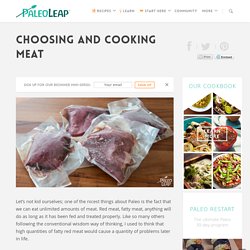
Red meat, fatty meat, anything will do as long as it has been fed and treated properly. Like so many others following the conventional wisdom way of thinking, I used to think that high quantities of fatty red meat would cause a quantity of problems later in life. Cooking with stainless steel. For those who are new to cooking, the first thing you need to know is this: you won’t get anything to brown in non-stick coated cookware. Stainless steel is the only way to go for beautifully browned meats, but there are some things to know about pans. Temperature is important, so learning to use your stainless is a good idea if you don’t want to ruin your food and destroy your pots.
If you don’t know how to use them properly or how to manage the temperature, your food will stick to the pan or burn. Here are some important tips about cookware. Aluminum pans will actually leach into the food as it cooks. Coconut vs Almond Flour. When most of us think “flour,” we think wheat flour, but technically, a “flour” is just a powder made by grinding up something else into the right size. You can make flour out of all kinds of grains, beans, roots, or seeds. From a Paleo perspective, the two major contenders for flour are coconut flour (ground-up coconut) and almond flour (ground-up almonds).
These are the two you’ll see most often in Paleo baking. Both of them have pros and cons, and they can both have a place in your pantry, but you might prefer one or the other. Obligatory killjoy disclaimer: neither of these flours should be a staple food in your diet. A Paleo Guide to Chocolate. We all love to cheer every time there’s a new study out showing the health benefits of chocolate, but it’s a lot less exciting the next week when another study comes out showing exactly the opposite. And just skipping from headline to headline doesn’t give you the background knowledge to even understand what’s going on in any of them.
So here’s a Paleo rundown of the pros and cons of chocolate. Is Chocolate Healthy? The short answer: chocolate is healthy in its raw form; products made with chocolate generally aren’t. Chocolate comes from cocoa beans, but to make the chocolate, the beans are typically separated into two cocoa butter (the fat) and cocoa solids (everything else). Cocoa butter: great source of healthy saturated fat. Another term you might see on an ingredients label is “chocolate liquor” – this is just the name for cocoa butter + cocoa solids. How To Make Almond Flour — TrulyLowCarb. Another Sample Recipe from Cooking TLC, Volume 1 I make my almond flour in a miniature food processor (I own an Oscar), or in a large high quality food processor (Cuisinart). Coffee grinders work, too. I have successfully used both “whole raw” almonds with the skins still on, and “blanched almonds”, which do not have the skins and therefore have less fiber and a slightly higher carb count.
Just fill the bowl of the machine you are using to the halfway point – no more than that – and pulse the machine on and off until you have a fine consistency. If you must, you can fish out any few stubborn nuts from each batch, rather than over-process the rest. When using those two types of almonds, I found that I could let the machine run for a long time without ending up with almond butter. My Primal Adventures: Adventures in Cauli-Bread.